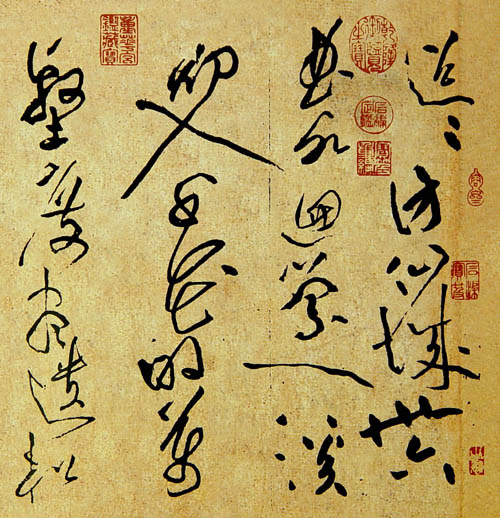Calligraphy's rescue remedy
 |
|
Huang Tingjian's calligraphy work, Song Dynasty [cchmi.com] |
Chinese calligraphy, which once enjoyed immense prosperity in ancient times, is seeking a revival as a range of initiatives are being put into place to rescue the declining art form.
Several new calligraphy academies and calligraphy-themed parks will open their doors after Spring Festival to promote the art form, encourage cooperation between calligraphers and attractingnewcomers to the field.
"Boosting theoretic research on calligraphy and promoting its innovation as well as international communications will be our main tasks," explained Wang Liang, director of the newly-established Beijing Calligraphy Academy, during the institution's inaugural meeting early last month.
Funds will be raised to help provide financial aid for the publication of academic research, holding exhibitions of high-quality calligraphy works and rewarding Beijing-born calligraphers with their achievements in the art, Wang said.
Handan Calligraphy Institute in Hebei Province opened its doors last month and construction work of a calligraphy-themed park will begin later this year in Xi'an, Shaanxi Province. An open calligraphy-themed park will also be built in Beijing to enable residents to enjoy calligraphy works while relaxing and to serve as an ideal space for exhibitions.
"It will undoubtedly be helpful in terms of encouraging the public to get close to calligraphy," commented calligrapher Xiao Wenfei, saying that although calligraphy once enjoyed a high status in China, in modern times calligraphy is far from common Chinese people.
"Nowadays more and more people are taking time out to enjoy fine art like oil painting and traditional Chinese painting as the main aspect of their art lives," Xiao said. "But few are showing interest in Chinese calligraphy works."
With a history of more than 3,000 years, traditional Chinese calligraphy has a strong reputation in the international art world and was prominent in China from the Jin Dynasty (265-420) until the late Qing Dynasty (1644-1911) when it was closely associated with the educated elite's social and cultural life.
Calligraphy was the main medium in which poetry and prose were documented during ancient times and expressed and held Buddhist scriptures. It was also usual to see a traditional Chinese landscape painting matched with a poem in the corner, written in calligraphy.
Chinese calligraphy was included as one of the world's intangible cultural heritages by UNESCO in September, which served as an encouraging sign for calligraphers lovers in China.
However despite its recent recognition, many art experts and critics in China are still concerned about Chinese cal-ligraphy's future, due to the dwindling numbers of people interested in the art form and the removal of calligraphy from many school's curriculums.
As a traditional Chinese art, calligraphy is losing its vitality both in terms of artistic innovation and its popularity among the public, commented Wang Yong, director of the Chinese Calligraphy Institute at the Chinese National Academy of Arts.
 0
0 







Go to Forum >>0 Comments